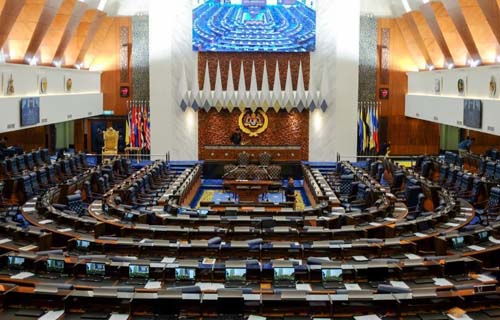Greening Malaysia’s FDI strategy

Written by Prof Dr Renato Lime-De-Oliveira, he is a Senior Fellow at the Institute for Democracy and Economic Affairs (IDEAS) and Dr Pieter E.Stek co-author of “Asserting Climate Change Leadership in ASEAN: Carbon Pricing for the Malaysian Steel Industry published by IDEAS
MALAYSIA has long enjoyed a reputation as a favoured destination for foreign direct investment (FDI). Now, amid global geopolitical uncertainty, it has reinvented itself as “the most neutral and non-aligned location” for manufacturing investment.
However, its current global environmental policies as well as national net zero aspirations will require changes to its FDI policies.
One industry in which Malaysia has attracted significant FDI is steel. According to the South-East Asia Iron and Steel Institute (Seaisi), Malaysia could triple its steel production capacity by 2030. But this could increase steel industry emissions from 3.7% to 12% of national emissions.
The rapid growth of the steel industry is primarily driven by foreign investment in new large-scale blast furnaces, which make steel from coal and iron ore. These are about 3.4 times more polluting than electric arc furnaces, which make steel from scrap.
However, the Investment, Trade and Industry Ministry (Miti) has welcomed these investments with a 15-year tax holiday.
The policy of giving tax breaks to large polluters goes against the nation’s plan to phase out coal-fired power plants and the Prime Minister’s recent announcement in Germany that Malaysia has agreed in principle to join the Climate Club, an intergovernmental forum for industry decarbonisation.
It also harms Malaysian export competitiveness under the European Union’s Carbon Border Adjustment Mechanism (CBAM), which will come into full effect in 2026. Under CBAM, imports from Malaysia will be taxed based on their carbon emissions unless Malaysia imposes its own carbon pricing mechanism.
Within South-East Asia, Sarawak, Singapore and Indonesia have already introduced carbon pricing frameworks. Brunei, Thailand and Vietnam are expected to do so before 2028.
Thailand and Vietnam are currently considering a CBAM-type carbon import tax that could target Malaysian exports.
By using highly polluting blast furnace technology while the rest of the world is working to drastically scale back emissions, Malaysia is heading in the wrong direction.
Japan, the European Union, and the United States have all announced multi-billion dollar research grants and co-funding to develop and construct low emissions steel mills.
Although the government has noted an ongoing study on carbon pricing with the World Bank (due in 2025), and Miti has imposed a moratorium on the issuance of new steel manufacturing licences until August 2025, more dramatic and immediate action may be needed to safeguard Malaysia’s economic competitiveness.
Carbon pricing, in particular a cap-and-trade scheme, can be an effective tool in reducing carbon emissions by making producers pay for the pollution they cause. Countries such as South Korea and China, and regional governments such as Tokyo, have introduced such schemes to reduce greenhouse gas emissions.
Carbon pricing is relatively easy to implement for the steel industry due to the concentration of emissions in a small number of locations. This makes it a suitable sector for Malaysia to pilot a carbon pricing system.
The Malaysian Steel Association (MSA), which represents local steel producers, has already expressed support for carbon pricing.
While carbon pricing would require an Act of Parliament and time to develop the necessary regulatory, measurement and reporting infrastructure, the Finance Minister could impose a temporary tax on coking coal that would act as an implicit carbon tax on blast furnace steel production. Similar taxes have been levied in China, India and Türkiye.
In the long term, Malaysia needs to develop an FDI strategy that also aligns with its broader social and environmental goals, and become, to paraphrase the Prime Minister, “the most carbon-neutral and non-polluting location” for global manufacturing.
This article first appeared in thestar.com.my on June 6, 2024.


